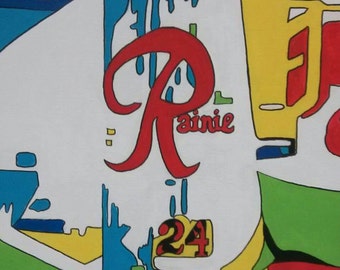



We lived a couple of blocks from the old Sicks Stadium. In the beer culture of our home, my father set the tone. Green was the color of the container, and of your face the next morning. The brewery also produced Rainier Ale, which resulted in hellacious hangovers and was nicknamed Green Death. Cute, but confusing to beer fans who just wanted a plain old Rainier. In the 60s, it introduced three kinds: Light-Light, Light and Not-So-Light. Rainier also tried producing beers in varieties and shades long before it was cool. Its TV ad campaign featuring an elusive herd of wild Rainiers caught on with the public (one is in captivity at the Museum of History & Industry). Rainier Beer probably made a bigger cultural mark.
VITAMIN R RAINIER PC
The PC police said it was sexist, but I defended the brewerys right to exploit young mens sexual frustration, and won. In the early 70s, I was nearly impeached as editor of the college newspaper at Evergreen for accepting an Olympia beer ad that read: Your Playboy arrived. Olympias slogan was Its the Water, but say Olympia today and most people think of a political swamp. They werent microbrews they were what you might call baseline beers that supported tavern culture. If you list local icons of the last half-century, youd have to include beers like Olympia and Rainier (Vitamin R). Washington hops, grains, a beer-friendly climate and thirsty baby boomers made this a perfect place for what ales us.Īfter Prohibition, ordinary local beers, mostly lagers, had resurged and become part of everyday life. In the 1980s, consciousness about local foods was blossoming, the states wine industry had burst onto the national scene, and local beer makers were making a comeback with microbrews.
VITAMIN R RAINIER ZIP
But often youd see a sleek old cruiser on Puget Sound and some boat buff would say that it was likely built as a rumrunner to zip around the Sounds dark channels. I grew up in Mount Baker and heard stories of Prohibition, though I dont think I ever received any secret messages via KOMOs kid-show host Captain Puget. They communicated via secret messages embedded in the scripts of a radio program for children broadcast from a home in the Mount Baker neighborhood. One prominent bootlegger, featured in the new Ken Burns documentary Prohibition, which airs this month on KCTS, was a Seattle police officer, Roy Olmstead, whose side business was managing a gang of booze smugglers. Washington was a major supplier of hops for beer and grapes for wine long before Prohibition, and during it, we avidly smuggled booze from Canada. Drinking locally is a long-held tradition, though it has gone in and out of vogue.


 0 kommentar(er)
0 kommentar(er)
